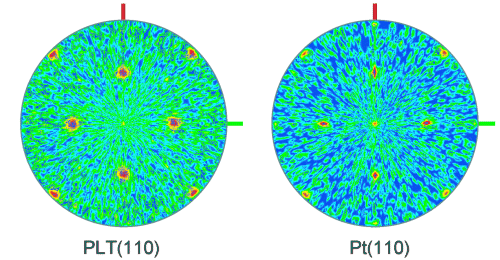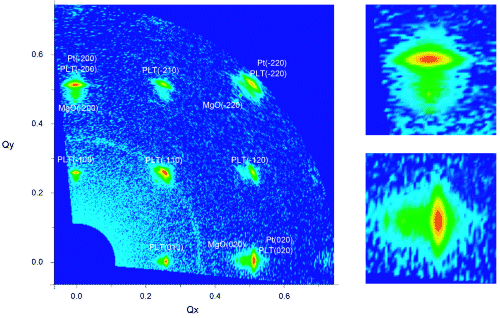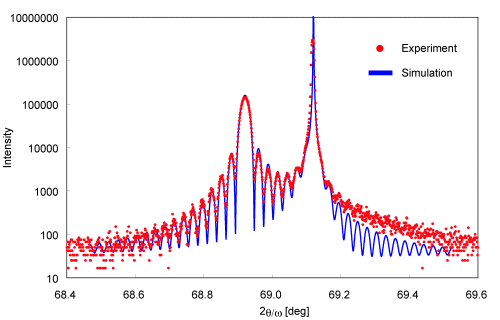Background
For thin film materials pole figure analysis can be used to determine orientation relationships between substrates and deposited materials.
Investigation
In this Ultima IV example in-plane pole figures were collected on both the Pt substrate and (Pb,La)TiO3/Pt/MgO PLT thin layer. The epitaxial relationship between the substrate and layer material is clearly shown. Critical to this measurement is the in-plane geometry which allows full pole figures to be collected on both the substrate and thin layer.

Perhaps the most useful measurement for the rigorous interpretation of thin film properties by X-ray diffraction is the reciprocal space map (RSM). RSMs show both the location and characteristics of reciprocal space points coming from epitaxial heterostructures. RSMs can be used to interpret orientation, perfection, strain, and relaxation in complex materials. In the example below, the use of in-plane scanning allows information to be gathered in directions parallel to the thin film sample surface.

For high resolution X-ray diffraction the CBO module provides a high quality, intense parallel beam for further conditioning by the automatically aligned multiple crystal optics proving optimal performance from a simple to use configuration. A high resolution rocking curve (below) shows peak separation between the layer and substrate reflections giving alloy composition.

